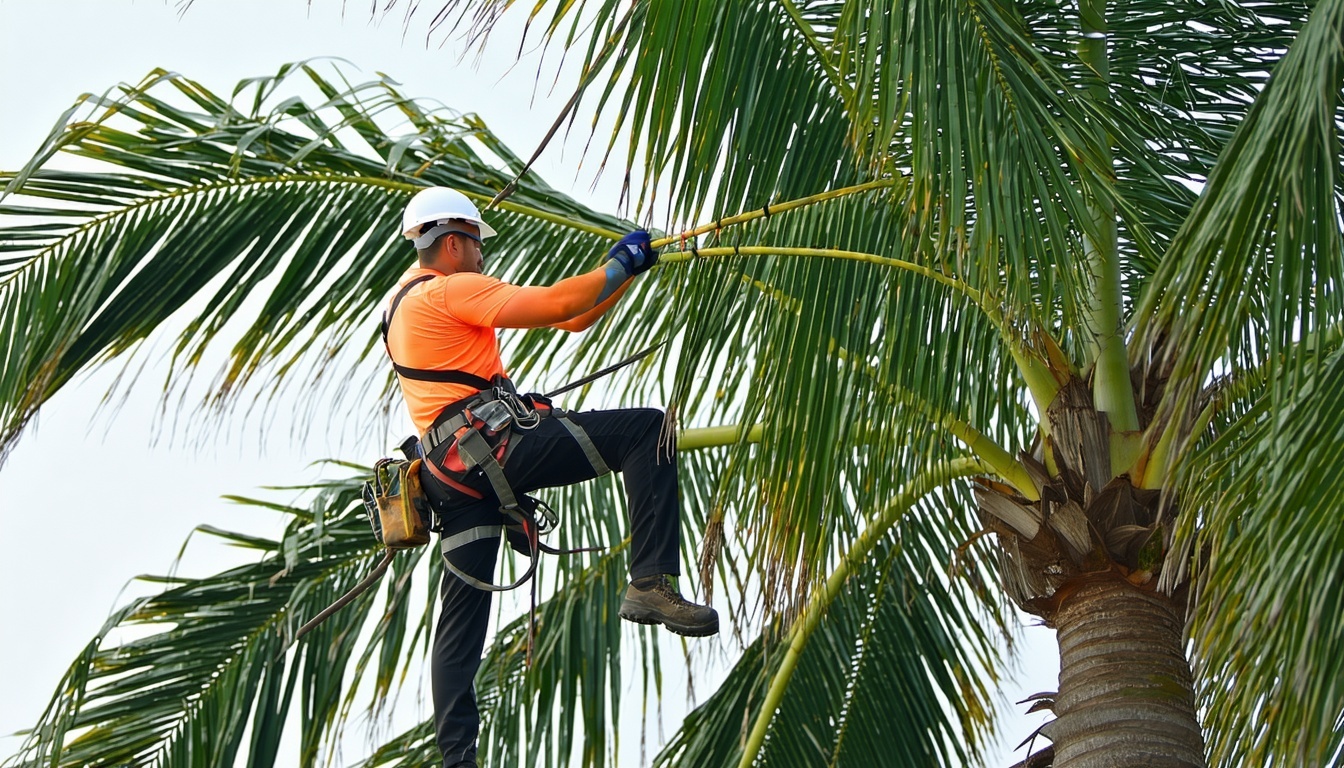
Pruning palm trees can be a hazardous task, often leading to severe injuries or even fatalities if not carried out properly. Learn the risks involved and how you can ensure safety while maintaining your palm trees.
Why Pruning Palm Trees is Risky Business
Pruning palm trees might seem like a simple task, but it is fraught with risks. The height of these trees requires workers to use ladders or climbing equipment, which increases the chance of falls. Additionally, palm fronds are heavy and can cause significant injury if they fall on someone. Workers are often required to use sharp tools, which can lead to cuts or other injuries if not handled properly.
Another major risk is the proximity of palm trees to power lines. Many palm trees grow tall enough to reach or exceed the height of nearby electrical wires, creating a dangerous environment for tree workers. Contact with these power lines can lead to severe electrical burns or even fatal electrocution.
Common Accidents and Their Devastating Consequences
The most common accidents that occur while pruning palm trees include falls from significant heights, being struck by falling fronds, and electrical injuries. Falls can result in broken bones, head injuries, and even death. Being struck by a falling frond can cause concussions, lacerations, and other severe injuries.
Electrical injuries are particularly concerning because they can be fatal. When a tree worker comes into contact with a power line, the high voltage can cause immediate cardiac arrest or severe burns. These injuries often require extensive medical treatment and can have long-term health consequences.
Case Study: Electrocution Incident in SW Miami
In May, a tragic incident occurred in Southwest Miami when a tree service worker was electrocuted while pruning a palm tree near Tamiami. According to CBS News, the worker came into contact with a power line while cleaning the palm, resulting in his immediate death. This heartbreaking event underscores the severe risks associated with tree maintenance near electrical lines.
The incident not only highlights the dangers faced by tree workers but also the potential liability for homeowners. If a worker is injured or killed on a homeowner's property, the homeowner could face significant legal and financial consequences, including lawsuits and increased insurance premiums.
The Importance of Hiring ISA Certified Arborists
Given the risks involved in tree maintenance, it is crucial for homeowners to hire ISA (International Society of Arboriculture) certified arborists. ISA certification ensures that the arborist has undergone rigorous training and adheres to industry safety standards. Certified arborists are knowledgeable about safe pruning practices, proper use of equipment, and how to avoid hazards such as power lines.
By hiring an ISA certified arborist, homeowners can significantly reduce the risk of accidents and ensure that their trees are maintained safely and professionally. This not only protects the workers but also minimizes the homeowner's liability.
Safety Tips for Homeowners: What You Need to Know
Homeowners should take several steps to ensure the safety of tree maintenance on their property. First, always hire a licensed and ISA certified arborist for any tree work. Verify their credentials and ask for proof of insurance to ensure that they are covered in case of an accident.
Second, be aware of the location of power lines near your trees. Inform the arborist of any potential hazards and ensure they have a plan to work safely around these obstacles. Lastly, never attempt to prune tall trees or those near power lines yourself. The risks are simply too great, and it's best left to professionals who have the proper training and equipment.
.webp?width=200&height=55&name=Logo%20horizontal%2070-2%20(1).webp)